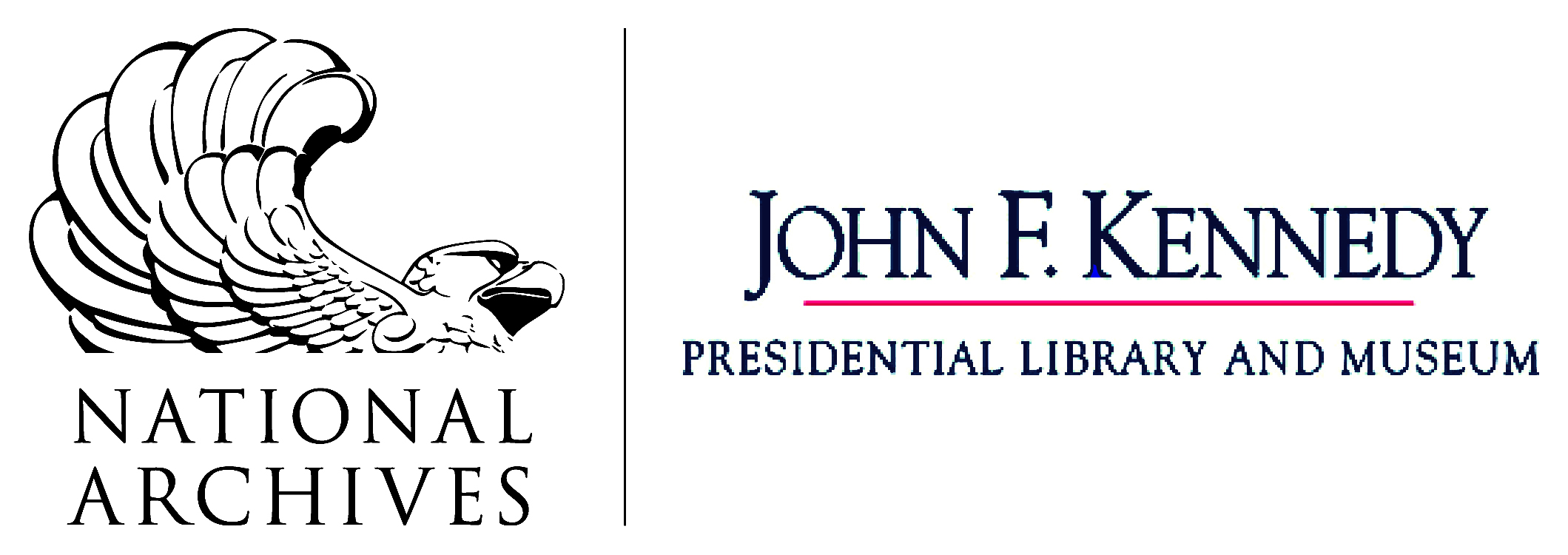(A version of this post was published on our previous blog on 3/26/2014; we’ve republished it in honor of Women’s History Month.)
By Suzanna Calev and Sara Hawran, Former Graduate Student Interns (Simmons University)
Greetings from Reference interns Suzanna Calev and Sara Hawran! Together, we completed an exhibit board in the main research room of the John F. Kennedy Presidential Library entitled “Jacqueline Kennedy’s White House Restoration Project.” Through our research we came across many interesting documents on this topic, too many in fact to fit in our exhibit board. While there is much scholarship written about the restoration, the documents gave us a new understanding of the work that went into restoring the White House and of the dedication of many individuals who made the project possible. We wish to highlight some of those documents in this blog post
According to a September 1, 1961 interview with Life magazine’s Hugh Sidey, Jacqueline Kennedy visited the White House with her mother and sister in 1941. She noticed the lack of historical furnishings on display and of information on the history of the building. When she became First Lady twenty years later, Mrs. Kennedy sought to restore the White House to reflect the styles of past presidents. Our search first led us to the Jacqueline Bouvier Kennedy Onassis Personal Papers, in which we came across a memorandum released on April 24, 1961 explaining the mission of the White House Restoration Project. Here is an excerpt from that memo:
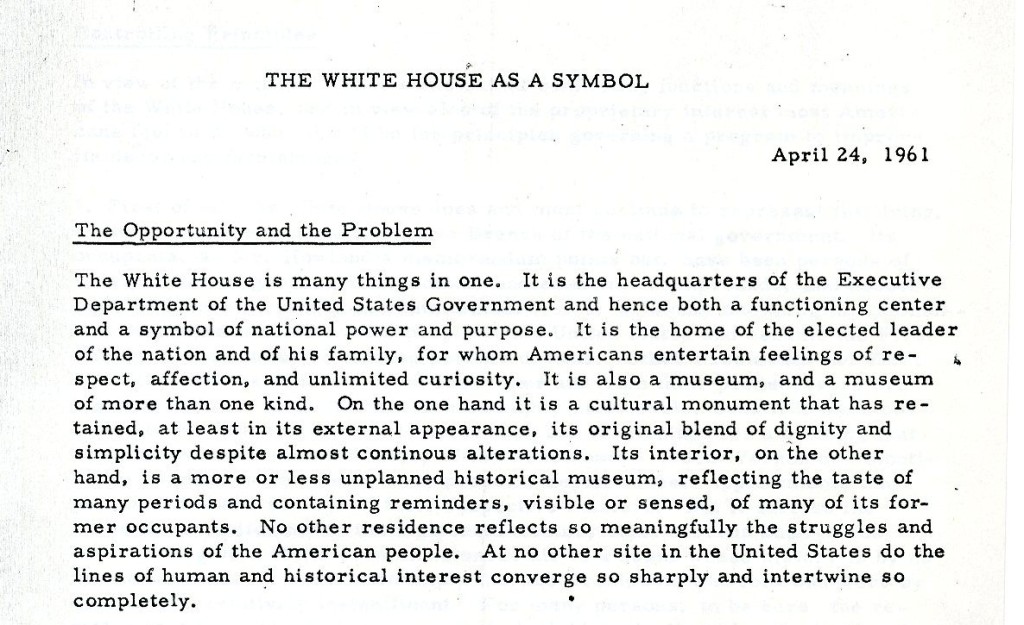
In preparation for the restoration project, Jacqueline Kennedy created a Fine Arts Committee that would help her find antiques from different presidencies. We came across a brief history of changes made to the White House during each presidential era, the narrative of which was written by Clinton P. Anderson, Senator of New Mexico from 1949 to 1973 (reproduced below). This document was unique because it pulled together the history of White House renovations made during each administration.
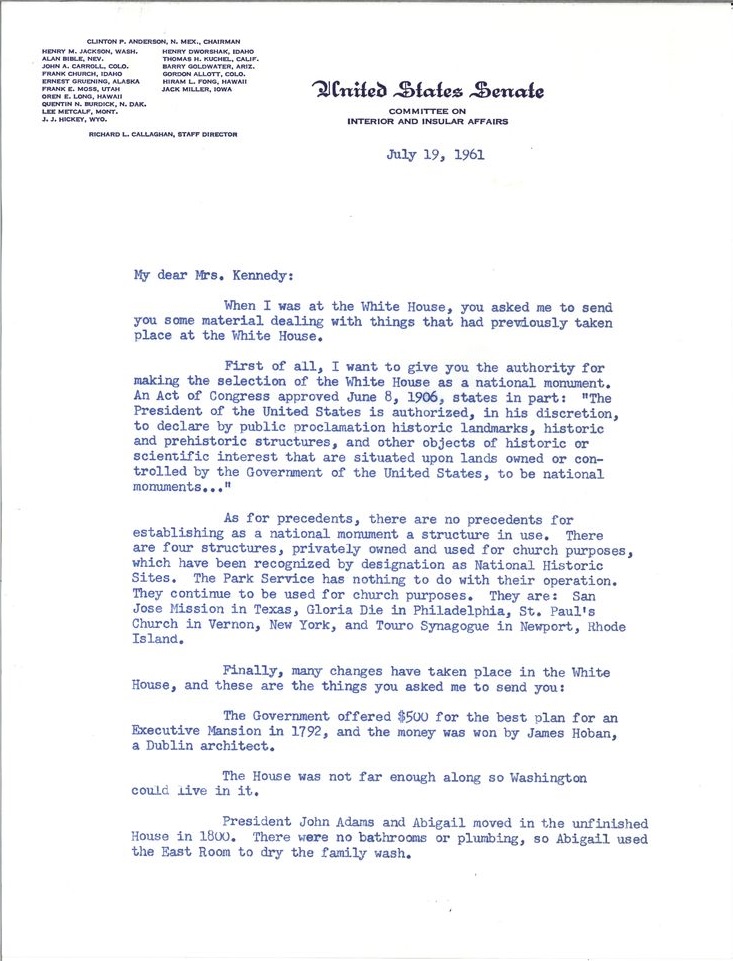
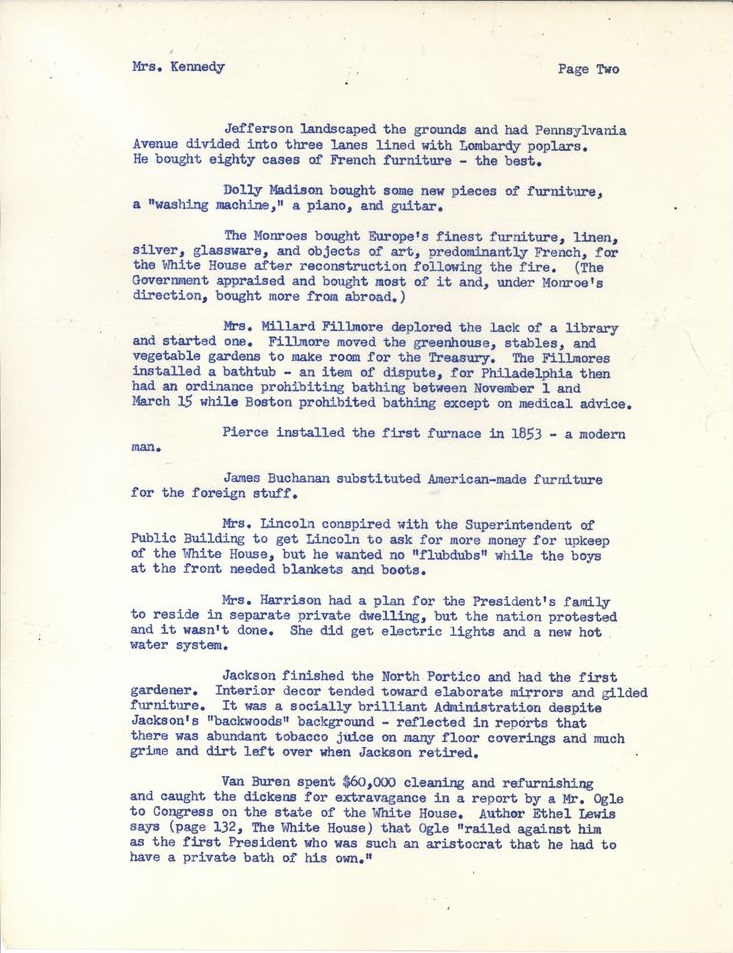
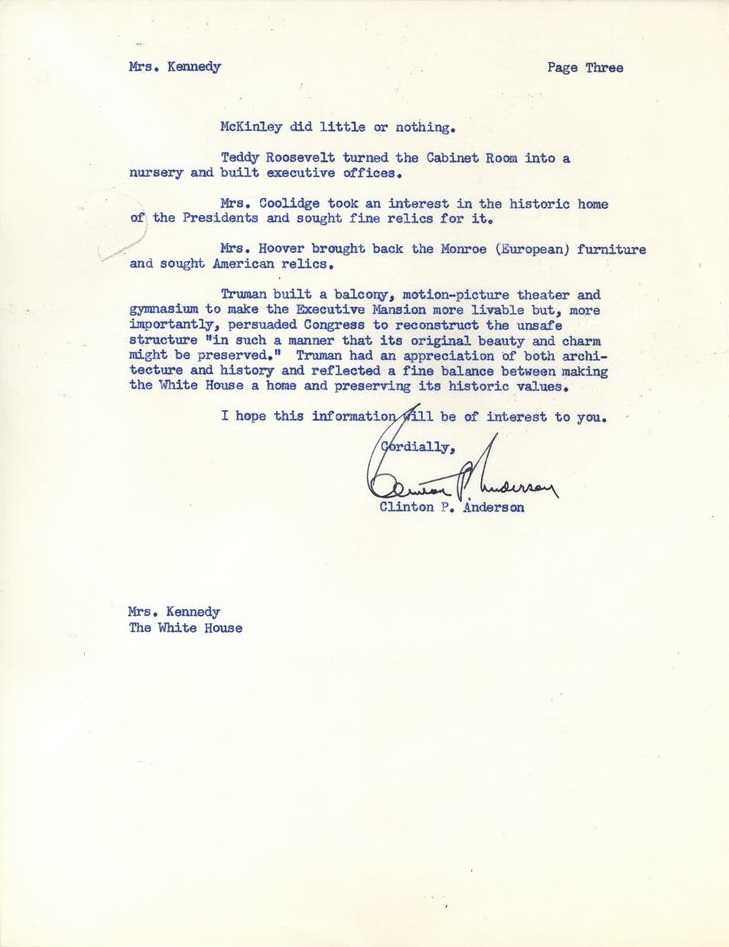
For her restoration project, Mrs. Kennedy sought the help of three individuals: interior decorator Dorothy Mae “Sister” Parish; American antiques collector Henry Du Pont; and Parisian designer Stéphane Boudin. With the assistance of Parish, Du Pont, and Boudin, she planned the alterations for each room. It was decided that the Blue Room would be restored to the period of President Monroe. Mrs. Kennedy fashioned the room after the French Empire style, as President Monroe had himself acquired French Empire furniture for the room after the 1814 White House fire. Two images from the White House Photographs collection show the room’s transformation between November 1961 and January 1963.
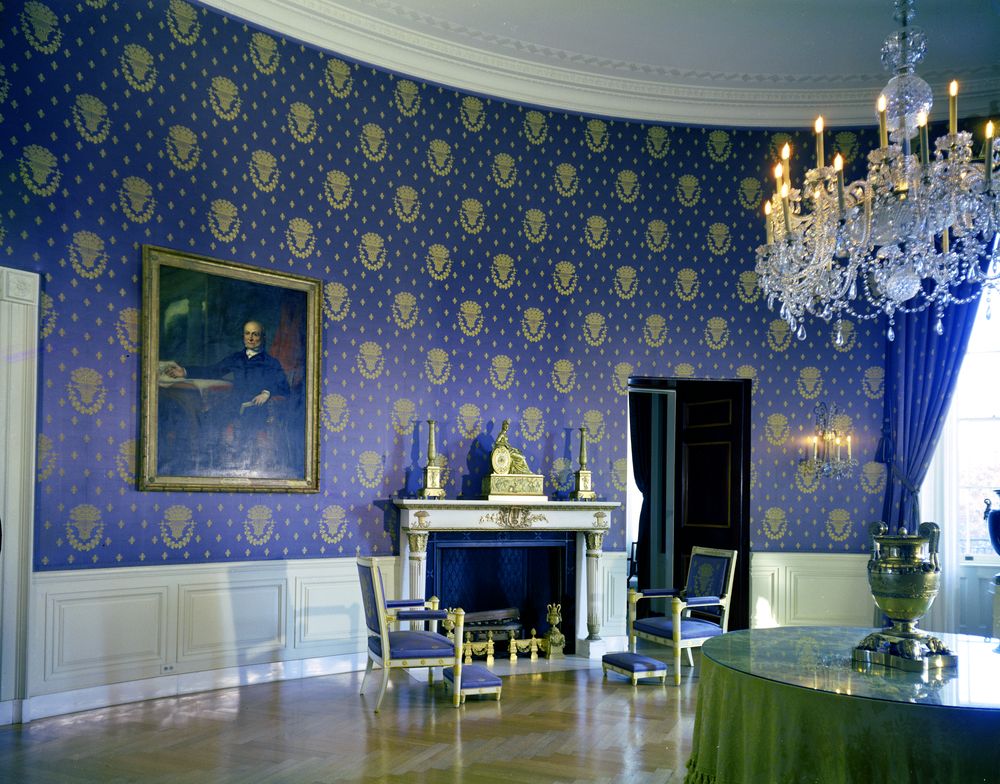
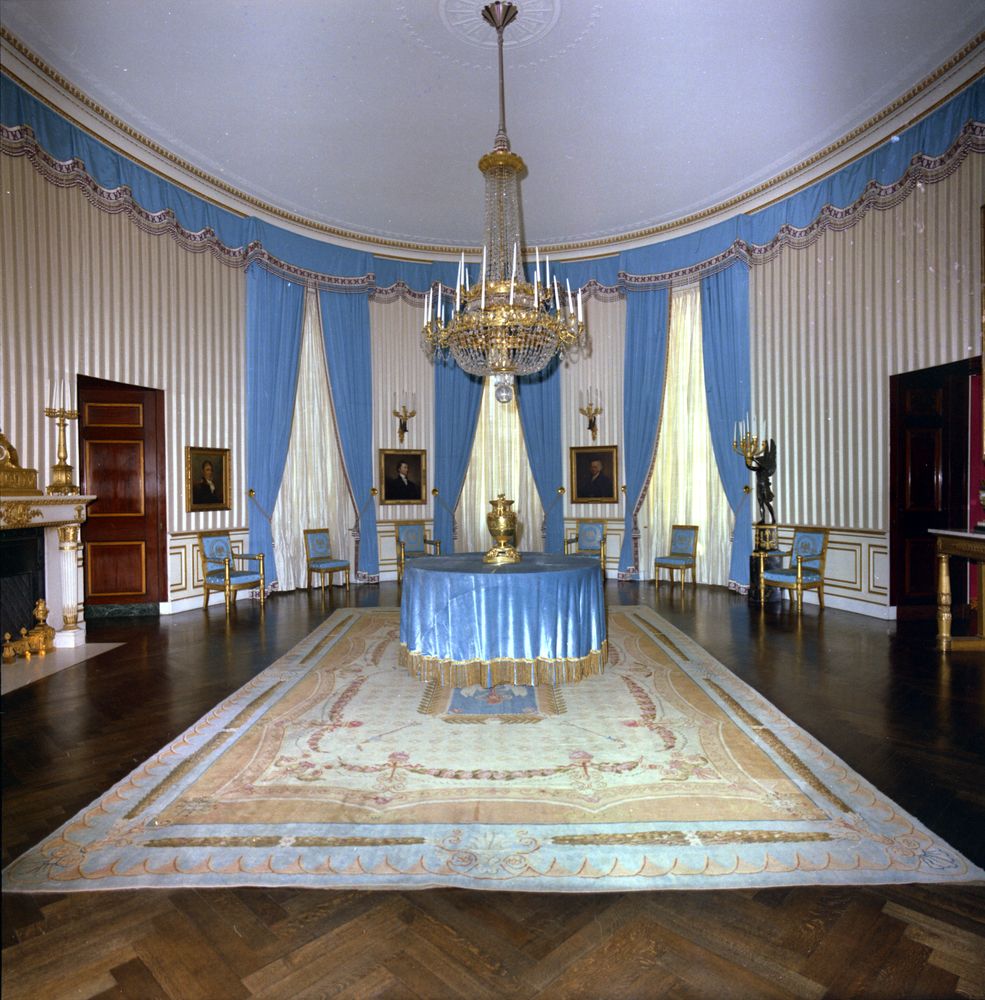
Although the curtains and upholstery remained the traditional blue, the room’s walls were changed to the cream color of President Madison’s administration. In the course of researching the Blue Room we found the following memo to Pierre Salinger, which discussed the possibility of changing the room to white. Included in the memo is Mrs. Kennedy’s statement that “the Blue Room will always be the Blue Room.”
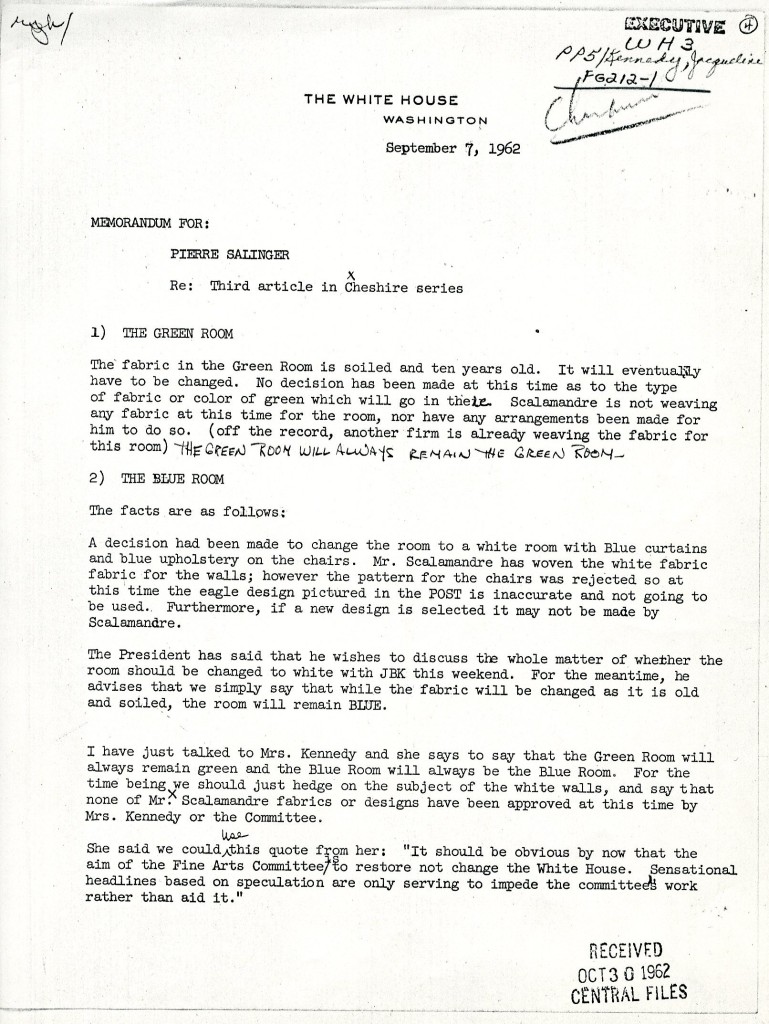
Mrs. Kennedy’s restoration met with overwhelming approval. She received thousands of letters from the public praising her restoration efforts, especially after her televised tour on CBS. Although some people were not pleased with her efforts, most of the messages sent to Mrs. Kennedy were very positive. The White House Social Files contain many of these letters, and the letters shown here exhibit two very different reactions to Mrs. Kennedy’s work on the White House.
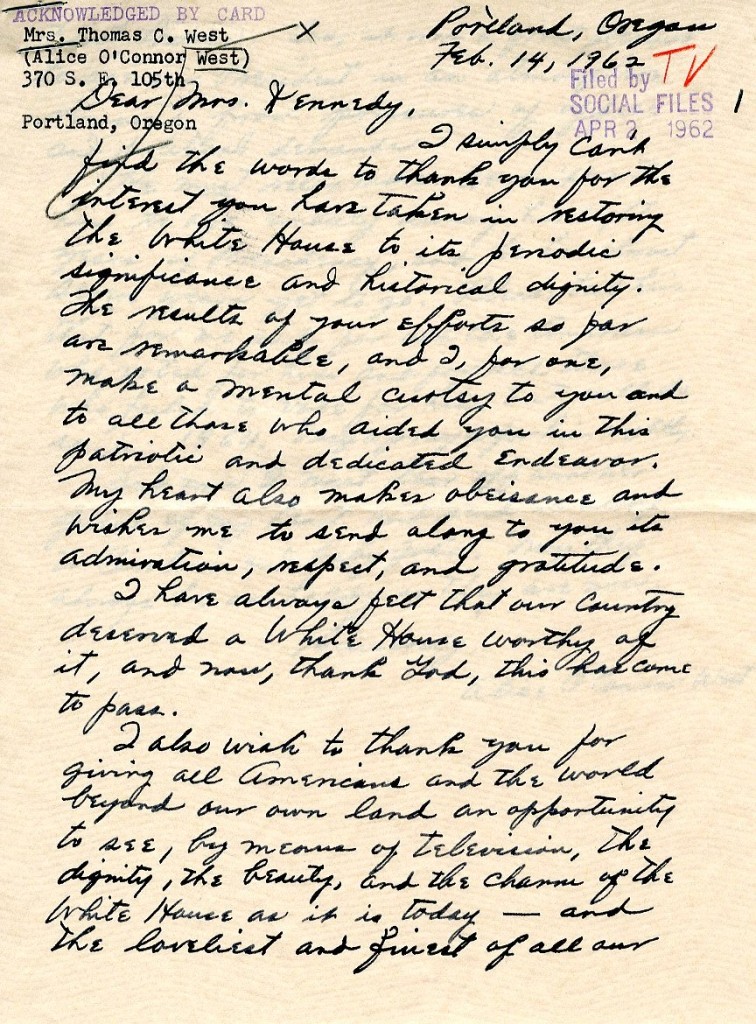
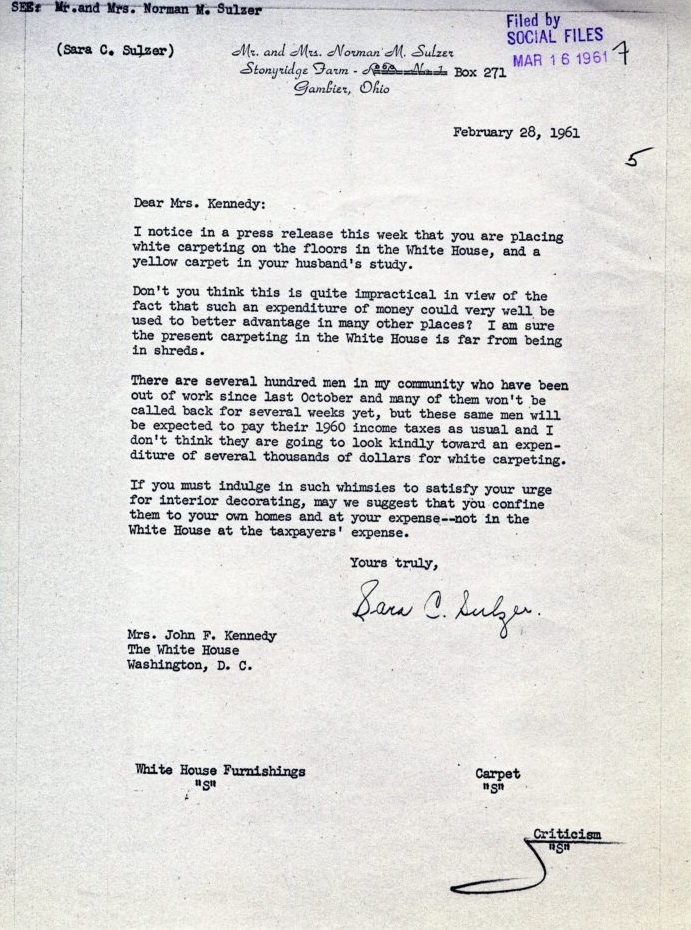
Following the Kennedy restoration effort, an executive order was passed on March 7, 1964 requiring the Committee for the Preservation of the White House to approve any modifications to the State Rooms. The Committee, which included the White House Curator and Chief Usher, would work with each First Family to maintain the historical integrity of the White House. As a result of Jacqueline Kennedy’s work on the restoration project, all administrations are now held accountable for the preservation of the White House.
These are just some of the documents that we came across in preparation for our exhibit board; the Kennedy Library holds many more materials on Jacqueline Kennedy’s White House Restoration Project. If you’re interested in researching this topic, we welcome researchers to contact us!
